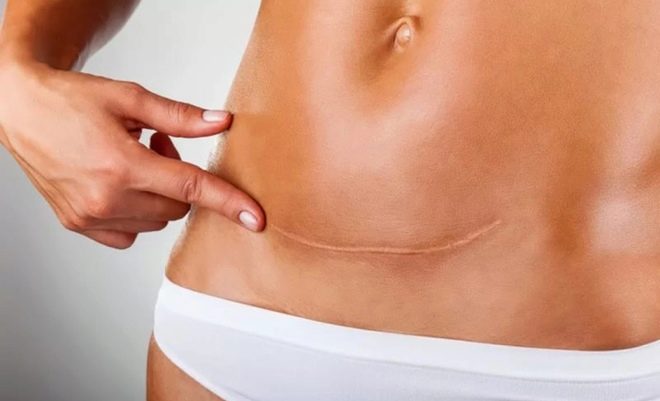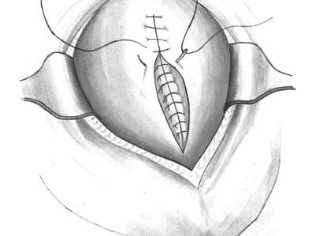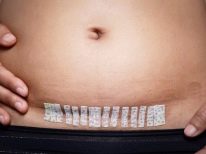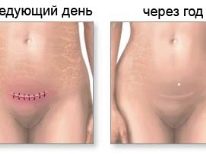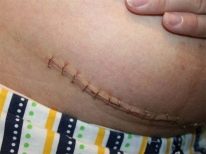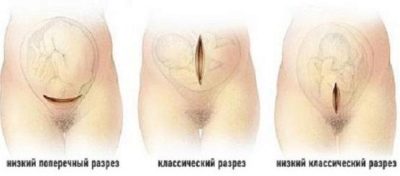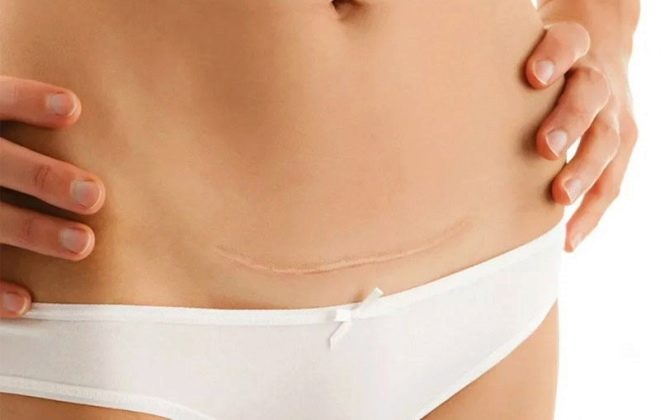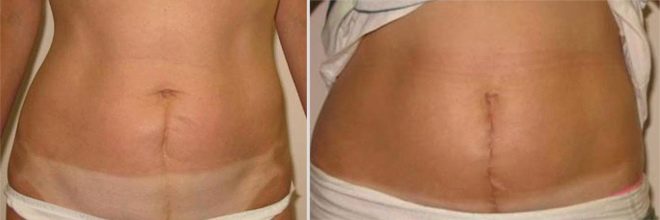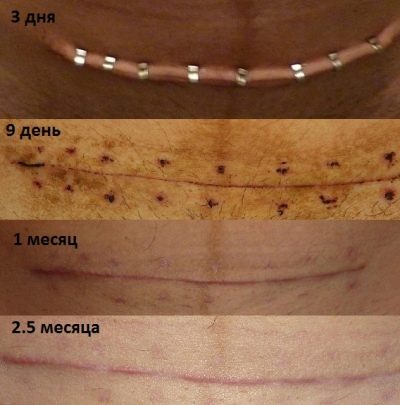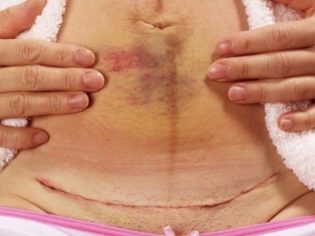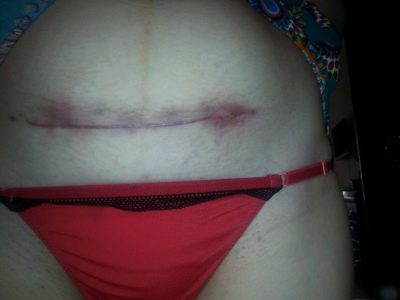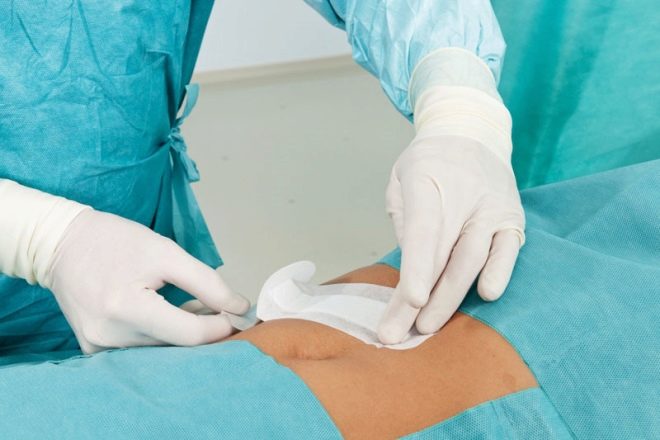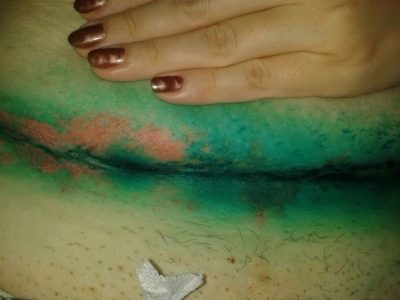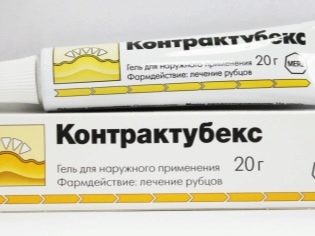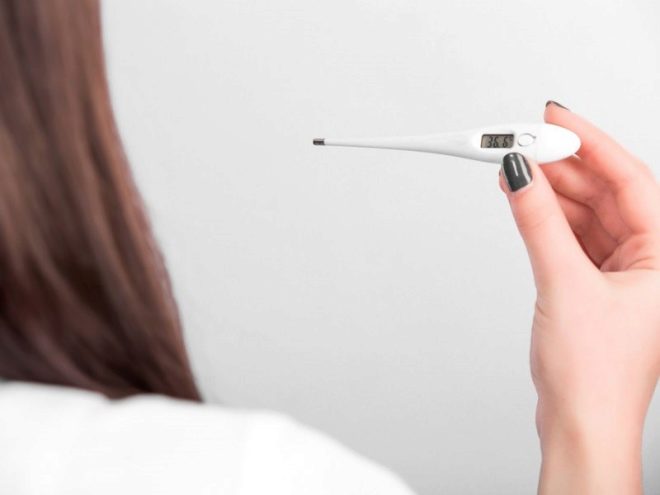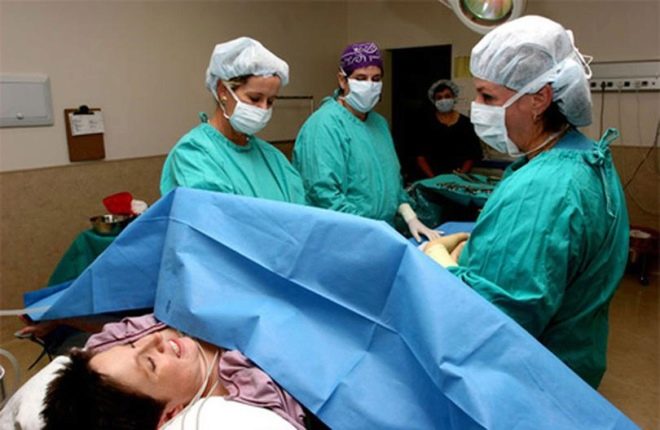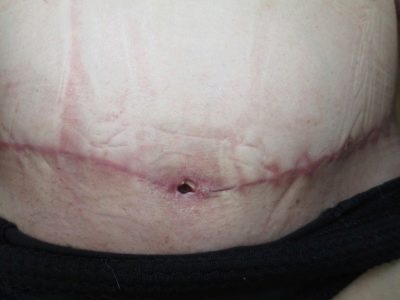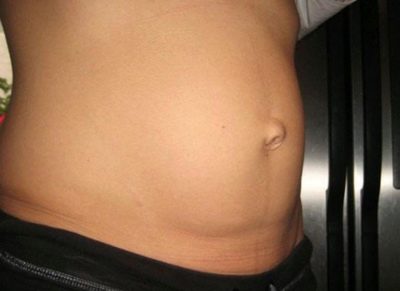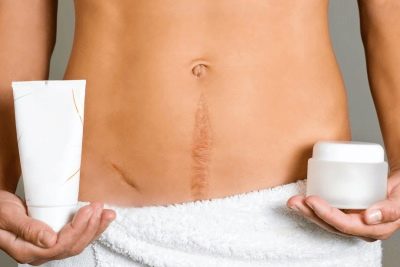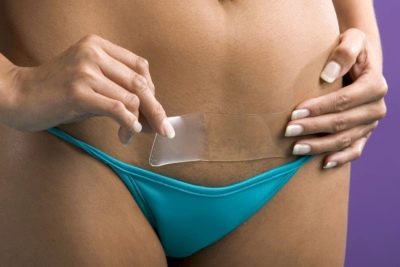Cesarean section suture: possible problems and treatment
After cesarean section, scars always remain. This is a cavalry and very serious operation, and the seams after it, alas, are inevitable. About what they are, how to care for them, what complications can be, we will tell in this article.
Kinds
The obstetric cesarean section is performed with a mandatory opening of the abdominal cavity, and cuts are made in the fat and muscle tissue on the uterus itself. Through them, a baby and a placenta are extracted. After removing the baby and the “baby seat”, all cuts are sutured. To do this, use a different technique of suturing and different suture surgical material. The seams on the uterus are called internal, and turn into a scar, and the seams on the abdominal wall are called external, and turn into a postoperative scar.
Internal
If a cesarean section is performed routinely, then doctors usually try to make a horizontal incision in the lower segment of the uterus. In an emergency operation, a vertical incision can be made to speed up the process. The uterus is dissected in the same way as the outer layers.
The ways in which such sutures are applied may be different - each surgeon has his own method of suturing, the main requirement for such sutures is the most accurate match of the wound edges. This is important for the formation of a full-fledged scar in the future. The materials used for suturing, dissolve themselves, to remove such seams, of course, is not necessary. They do not require any special care, it is enough to follow the recommendations of the physician on the exercise regime and the prevention of infections.
On the uterus usually impose a single continuous suture. Muscles sutured with stitches. The self-absorbable suture material sutured and the connective tissue of the peritoneum.
External
External seam depends on the choice of technique of operation. If it is carried out urgently, it is possible that not the most beautiful scar from navel to pubis will appear. Such a suture is sutured with especially strong threads and connected with a nodular method, since it is more difficult to retain the edges of the external wound during a corporal longitudinal incision than with a small transverse seam along the pubic line. Fortunately, today all planned operations and a good half of emergency surgeries are carried out according to the method of Pfannenstiel, the German doctor who first began to practice this type of incision.
With relatively small sizes, such a seam may well be cosmetic, which cannot be said about corporeal dissection. To fasten the edges of the wound from the outside can be used different types of surgical threads or metal brackets.
External seam classification
The woman herself is naturally incapable of seeing the internal stitches. But external ones can quite perturb. And indeed, different types of external postoperative scars have their own characteristics.
Horizontal
Pfannenstiel section is considered the least traumatic. The surgeon's scalpel passes only along the edge of the abdominal cavity, in the natural skin fold above the pubis. Such an operation is considered not only less dangerous, but also more favorable for women planning the next pregnancy through caesarean section. The lower uterine segment where the incision will be made is least subject to stretching.
The seam looks pretty neat. If you properly care for him, that in one and a half - two years it will be almost unnoticeable. The location of the seam is very convenient to mask underwear. The seam is perfectly covered with panties or swimsuit swimming trunks. A woman's belly does not disfigure.
The length of the seam with this cut is not more than 10 centimeters. There is another type of horizontal dissection - extreperitonial, when the incision is made very small - 2-3 centimeters under the navel line. But such a cesarean section is extremely rare, since the operation is technically very complex and involves certain risks for the mother and fetus.
Vertical
Vertical or corporal suture is always an urgent need. This type of operation is carried out if the child needs to be removed as soon as possible — there has been abundant uterine bleeding, the baby has a state of acute hypoxia, in which he is threatened with death or the onset of severe health consequences.
Such a seam can not be hidden under the line of panties or heats. It is coarser because the nodular suturing technique. Moreover, over time, such a seam tends to thicken, and become more noticeable and unpleasant.
Healing mechanism
The healing time and the likelihood of complications also depends on what type of incision and what type of suturing was used by the surgeon.
Interior
Internal sutures heal in about 7-8 weeks. On the first day after the operation, so-called adhesion zones are formed, consisting of fibrin beams. That is why it is important to limit sudden movements, although early gentle verticalization will be beneficial.
A week after the operation, the internal scar on the uterus already has new uterine cells, and the circulatory grid is restored. If the healing proceeds normally, without complications, then the myocytes will prevail in the rumen, and collagen will be produced, which will ensure the fullness and elasticity of the scars. This is very important for the subsequent pregnancy.
If the recovery process is disrupted, a scar with a predominance of coarse connective tissue will form, inadequate and heterogeneous, which greatly complicates subsequent pregnancy and childbirth.
The inner seam cannot disappear completely, the scar is preserved forever, and the more prosperous he is, the higher the chances of having a second child independently, without the help of surgeonsif there was only one caesarean section in history. Complete scar formation is completed 2 years after surgery.
External
Healing depends on the type of scar. The vertical suture remaining after an extra corporeal section heals longer, the probability of complications with such a scar is higher. The external suture after horizontal dissection in the lower uterine segment begins to begin as early as the next day after the operation; after 7–8 days, the sutures can be removed.
Earlier, when women were in the hospital for up to 10 days after operative delivery, the removal of sutures was performed in the maternity hospital. Now, when a woman with a child is discharged on the fifth day after the operation (in the absence of other complications), suture removal is performed at the antenatal clinic for 7-8 days. The procedure is painless, though not the most pleasant. After removal of the surgical sutures or staples, the suture continues to form, and complete healing may take up to 21 days. Vertical suture heals up to 60 days.
One year after surgery, the horizontal suture in the lower uterine segment brightens, becomes almost imperceptible.
Recovery features
Since the suture is the junction of the dissected tissues, one should be aware that not only skin, muscles, but also nerve endings are dissected during the surgical procedure. Therefore, two postoperative sensations are quite normal - numbness of the upper abdomen (due to loss of sensitivity after nerve dissection) and pain (for the same reason).What else can a woman face in the postoperative period?
Pain sensations
The pain is strongest in the first 2-3 days, which is why a woman is given painkillers at this time. This is necessary to make it easier to carry the contractions of the uterus with the incision. But after 2-3 days, the nerve fibers damaged during the operation are replaced by new neuromuscular connections that appear when the integuments and their internal structures are restored at the cellular level. The pain decreases, but the discomfort does not go away, the woman has a feeling that the seam area is constantly pulling, sometimes pinching, the scar itself is hard.
Certain unpleasant pain may be present after discharge home, and only after 6-8 weeks a woman will almost no longer feel the scar.
If a woman has severe pain, then only a doctor should prescribe additional painkillers.
Hardness
While intensively healing the tissues damaged during surgery, some hardness is quite characteristic of the scar. Then, when more collagen is produced, it should become softer. Therefore, a woman should not be bothered at all that the scar is hard for at least two months. This is normal.
The full softening of the scar, if it is horizontal above the pubis line, may take several months, and sometimes several years. This is individual, given that the fatty layer on the abdomen is different for women of different builds and constitutions.
If the hardness is uniform throughout the entire scar, do not panic. But the appearance of a keloid fold above the scar, as well as the appearance of violet, crimson, dark brown seals over the seam, cones of different sizes in certain areas of the scar is an alarming sign that may indicate a fistula or tumor. Be sure to need an ultrasound examination and medical consultation.
Discharges from the rumen area
A good scar without signs of inflammation should not release any fluid, mucus, blood, or blood. Only in the first few days this is considered permissible and is explained by the process of tissue healing. If the discharge lasts for more than a week, if the seam is festering, any liquid is released from it, suckling, if the scar area is festering, getting wet, bleeding, itches badly, then there is every reason to believe that the seam is inflamed.
What to do in this case, it is clear to everyone - seek emergency medical attention, because infection is not excluded. Caesarean section itself is associated with an increased risk of infection, and therefore it is impossible to ignore such symptoms.
Sensitivity, itching
It is necessary to clearly distinguish tolerable itching, which by and large does not bother the mother very much after about 8-10 days after the intervention, and intolerable itching, in which the seam burns, burns and inflames. Slight itching speaks of healing, since the process of scarring itself is associated with the formation of slightly elastic sections of the connective tissue; it is this that creates a slight internal tension and causes itching. This process is physiological, it passes by itself, and does not need treatment.
If you experience severe itching and burning, it is necessary to consult a doctor. Much of the specifics of wound healing after cesarean section depends on how well the suture is treated.
Treatment
The stitching zone is started from the first day in the maternity hospital, the treatment is shown once a day. Then the woman receives recommendations on how to care for the scar at home. Let's look at the features of each care.
In the maternity hospital
After the dissection is sutured, the area is treated with an antiseptic solution and a sterile dressing is applied, which is attached with pieces of a bactericidal patch. In the future, the dressing is changed once a day, not forgetting to process the seam with green paint.Zelenka is necessary in order to avoid one of the most severe bacterial lesions - staphylococcal, since this microbe is only afraid of this antiseptic, to the rest it is completely insensitive.
The treatment is carried out by a nurse, a doctor on a tour in the maternity hospital can visually inspect the scar.
If something causes questions, a woman is prescribed an ultrasound scan to examine the scarring area.
After discharge
Home care for the operated abdominal area is more multifaceted, it includes a whole range of activities. In order to prevent discrepancies, it is important for a woman to follow all the recommendations, and to continue to process the seam every day.
Houses seam treated with green paint. And here you can not do without outside help. It is impossible to wet the scarring zone, so you should try and wear a gauze bandage at home, in any case, until the stitches are removed. Brush with a cotton swab on the area around the wound. This will avoid bacterial contamination.
It is strictly forbidden for a woman to lift weights, since any tension in the abdominal muscles can be disastrous for scars - internal and external. The optimal weight, which is not forbidden to lift - 3-4 kilograms.
But the adhesions and irregularities in the seam will be much less if the newly-made mother does not lie in bed for the whole day - adequate movement, walks at leisurely steps will only benefit.
After the stitches in the antenatal clinic are removed, the absence of a bandage is recommended so that the suture heals faster on contact with air. Try not to wet it for another five days, in the presence of small secretions from the scar, you can use hydrogen peroxide to soak dried crusts. Continue to smear green paint around the scar.
After scar healing, it is allowed to use "Contractubex”, Which reduces scars and scars, making them unobtrusive. But before applying the gel, you should consult with two specialists - with the gynecologist about the condition of the scar (for inflamed scar drug is not used), and with a pediatrician about breastfeeding. Most often, nursing mothers are advised to buy Contractubex in the form of special patches.
Handle "Bepantenom“The area of the scar does not make much sense, it does not dissolve, but only softens and moisturizes. For the same reason, you can not use "Bepanten" on moist and inflamed surfaces.
Avoid wearing panties, the gum which pass along the scar, the pressure on this area will interfere with the healing and resorption of hard nodules. Subsequently, when taking a bath and shower do not rub the scars with a washcloth.
Complications
Depending on the time of occurrence of negative consequences, all complications of the postoperative suture condition are divided into two types: some appear immediately after surgical delivery, others much later. Let's look at both those in sequence.
Early
By early complications usually include a variety of infectious processes that may occur at the site of suturing. The infection can even get into the operating room, and a woman is warned about a possible complication, with her informed consent for intervention is her signature.
Manifestation is usually the traditional clinical picture, which includes an increase in body temperature, suppuration, swelling in the area of the scar. The seam itself can fester, bleed.
If the suture in the first days after the operation is excessively bleeding without signs of inflammation, the surgeon’s error is not ruled out, who did not carefully suture the sutures, as a result of which the blood vessels were damaged. Usually, the condition is accompanied by the formation of hematomas of various sizes and numbers on and around the suture.
To early complications include the dangerous, though quite rare today seam divergence.This can happen if the stitches were removed too soon, hastily, if the healing of the postoperative wound was complicated and slowed down by infection. There are also immune reasons - a woman's body rejects suture material, which is imposed on the incision, both inside and outside. An autoimmune complication is considered one of the most unpleasant and difficult.
Symptoms of divergence of the external suture are quite obvious - an open wound will appear in that part of the scar that has not grown together, bleeding may resume. It is much harder to understand that internal seams have gone apart. The gap that has already begun is accompanied by such symptoms as a sharp drop in the blood pressure level, the woman is covered with sticky sweat, there can be severe pain in the abdomen or pain shock. And the gap is accompanied by loss of consciousness, massive internal bleeding, discharge from the genitals.
A woman needs emergency medical surgery, otherwise she may die.
Late
Late complications can also include the risk of uterine rupture along the old scar. External seams are not torn during the subsequent pregnancy, but internal ones can disperse. Symptoms and signs of discrepancy will be similar. Too thin suture on the uterus during the second pregnancy is a subject of special observation. The risk of such complications increases if the woman did not wait for the recommended period of abstinence from a new pregnancy, and doctors advise two years to carefully protect themselves if the scar has formed insolvent.
Complicated postoperative period creates the risk of the formation of an abnormal scar, women with multiple uterus operations, systemic diseases, weak immunity, women leading an unhealthy lifestyle are also at risk. If the scar has spread during pregnancy, children and their mothers may die. If this happens already in childbirth (when a woman decides to give birth with a scar on the uterus by the physiological route), then the chances of salvation are much higher - an emergency caesarean section will be performed.
Ligature fistulae, areas of necrotic nature around the points of contact with surgical sutures, also belong to late complications. This can happen when the female organism rejects the suture material, as well as during infection.
Even a few months after the operation, a hotter to the touch may appear, a red seal on the seam, which, when touched, will deliver pronounced pain. Quite often, ligature fistulas have a small opening through which pus and ichor can flow out with gentle pressure. There is no sense in treating them with brilliant green, iodine or anything else - this does not have any effect. Need the help of surgeons who will remove the fistula.
Another long-term complication is a hernia in the suture area. Most often it appears in women after the corporal (vertical) cut. But sometimes it happens with a low horizontal section. Manifested by the formation of a subcutaneous hernial sac, pain when moving, palpation. The condition also requires the provision of surgical care in a hospital.
Hernia can develop due to non-compliance with the recommendations, especially with regard to physical activity. An early return to workout in the gym, an early return to active sports, abdominal exercises, and weight lifting can cause a hernia to develop.
Ways to remove the scar
To remove a scar from the belly, if a woman wants this for aesthetic reasons, it is rather difficult, but possible. The most effective are the early use of ointments, the same "Contractubex”, But if time is lost, more than one and a half years have passed after the operation, then with an ugly scar, and with a roller made of leather over the seam, other techniques will help to“ figure it out, ”however, more expensive and troublesome.
Need to understand that None of the existing techniques will offer complete relief from a scar, but it is possible to make it less noticeable. Silicone patches, ointments and gels are relatively inexpensive and affordable, but they will not work at all if the scar is over a year old. And in the earlier time period they do not act on everyone.
There are injection methods that involve the introduction of certain drugs that reduce the growth of the scar. But for nursing mothers, they are contraindicated, for non-feeding ones, they are dangerous with severe allergies and failure of the female cycle, and after one year has passed since the operation, such methods are generally considered ineffective.
Grinding of the scar area is considered acceptable at any age of the scar itself. This is a fairly effective way to reduce the scar. During breastfeeding procedures are highly undesirable, their significant drawback is the high cost of the sessions, and to achieve the visible result of the sessions, several are required.
For help, you can contact a plastic surgeon. There are several methods of excision of old ugly scars and the formation of new, more accurate. However, no one will guarantee that the healing of new scars will go well and without complications, especially if the woman has a tendency to keloid growths. In addition, a new portion of anesthesia and the entire possible range of potential postoperative complications are again possible. The surgical method is suitable only for those whose scars have formed large, small scars in this way are not corrected.
There is a very exotic way - to tattoo the area of the scar. But no one guarantees that such a disguise will always look aesthetic. If a woman gains weight or loses weight, the skin will stretch or sag, resulting in a pattern that will lose its appearance.
Reviews
Often women who have experienced problems with stitches after cesarean section note that the discrepancy (partial) after the operation occurred mainly when self-absorbable sutures were used for external suturing.
But only good reviews about the method of sealing the outer seam, after this method of fastening the edges of the wound, there are almost no traces left, and the stomach looks very aesthetic. However, this method is used infrequently.
Many of those who have experienced complications claim that the lion’s share of the pain was experienced after surgery from the resulting adhesions in the postoperative zone.
Gels and ointments are considered effective by no more than a third of women who have tried them. The dynamics of the regression of the rumen by month for young mothers usually do not have time to watch, but many note that the scar became inconspicuous after a year.
On the care of the seam after cesarean section, see the following video.

